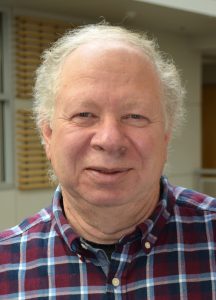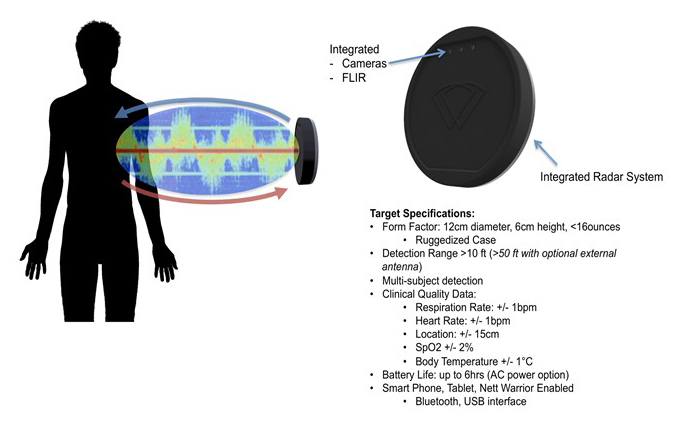A Department of Defense medical research program has awarded a University of Tennessee research effort to develop technology to detect a person’s vital signs remotely using microwaves.

Aly Fathy
“We started by thinking about saving lives by remotely detecting vital signs of buried bodies after earthquakes under debris, moving to within few meters, and up to 50 meters for non-contact measurement,” says Electrical Engineering Professor Aly Fathy of the Min H. Kao Department of Electrical Engineering and Computer Science. “Now, we are moving to monitoring people’s vital signs in jail to prevent suicides, for example, or monitoring patients with infectious disease like in situations similar to the current coronavirus epidemic, or sleep apnea for new born babies. Other applications include gait analysis which will have great impact on monitoring athletes.”
Each year, a broad spectrum of research and product development efforts are considered for funding under the Joint Warfighter Medical Research Program (JWMRP). The JWMRP program augments and accelerates high priority Department of Defense (DoD) and Service medical requirements, serving to continue both Congressionally-directed and core prior medical research and development initiatives that are close to achieving their objectives and yielding a benefit to military medicine. It also addresses the requirements and needs of advanced product development communities by facilitating further maturation of promising medical solutions through the acquisition process.
JWMRP recently announced an award of $300,000 to the University of Tennessee and a separate award amount to MaXentric, Inc. for their partnership in non-contact vital sign detection radar technology. This technology, pioneered by a team led by Min H. Kao Department of Electrical Engineering and Computer Science Professor Aly Fathy, helps military troops and first responders identify the medical status of casualties in need, from a distance. The team also includes Tickle College of Engineering Associate Dean for Academic and Student Affairs Ozlem Kilic; doctoral students Farnaz Foroughian, Toan Vo Dai and Tsotne Kvelashili; and master’s students Chandler Bauder and Kellen Oleksak. Other students who have been involved in the project recently include doctoral students Lingyun Ren, Yazhou Wang and Farhan Quaiyum, master’s student Sabikun Nahar and undergraduate student Marvin Joshi.
The award recognizes the team’s significant progress in this project, which is being developed under the US Small Business Administration’s Small Business Innovation Research program. This highly competitive program encourages domestic small businesses to engage in Federal Research/Research and Development (R/R&D) with the potential for commercialization.
The system developed by UT and MaXentric, called VitalWave, uses ultra-wideband, micro-Doppler radar to access the vital signs of multiple users in an environment. Sensing can be done through obstacles. The system has potential applications is sports medicine, hospital monitoring, disaster relief and triage.
 “It is all about remote evaluation of vital signs to detect heart rate, respiration rate, blood pressure, body temperature, and oxygen saturation level,” said Professor Fathy. “Some of the developed methods use optical techniques as well, others are microwave radar-based. Microwave techniques can detect subjects behind walls, or under debris. It can be used for other applications like tracking of activities, fall detection, or evaluation of patients with high infectious diseases. Our team at UT has been developing this technology for a long time and has been sponsored by the Defense Advanced Research Projects Agency (DARPA), the United States Army, and the United States Air Force.”
“It is all about remote evaluation of vital signs to detect heart rate, respiration rate, blood pressure, body temperature, and oxygen saturation level,” said Professor Fathy. “Some of the developed methods use optical techniques as well, others are microwave radar-based. Microwave techniques can detect subjects behind walls, or under debris. It can be used for other applications like tracking of activities, fall detection, or evaluation of patients with high infectious diseases. Our team at UT has been developing this technology for a long time and has been sponsored by the Defense Advanced Research Projects Agency (DARPA), the United States Army, and the United States Air Force.”
Of the partnership between UT and MaXentric, Dr. Fathy says “we at UT are leading the basic research, developing the new ideas, and implementing the prototypes. MaXentric takes to the next level including validation, user friendly interfaces, contacts with DoD, and building engineering models. We have conference calls, visits to their facilities, sharing some hardware costs, in-house training of our students through summer internship, and coauthoring transaction and conference papers.”
Over the course of the three-year project, Dr. Fathy’s team will work to miniaturize the radar and speed up the software. The latter will include machine learning, to improve the confidence level of remotely measuring human vital signs. They will augment radar techniques with optical techniques to add more functionality, such as measuring blood pressure, body temperature, and heart rate variations from a distance, or even through walls. In the last year, Dr. Fathy’s team will demo the enhanced prototype and validate results, and then MaXentric will start the FDA approval process.